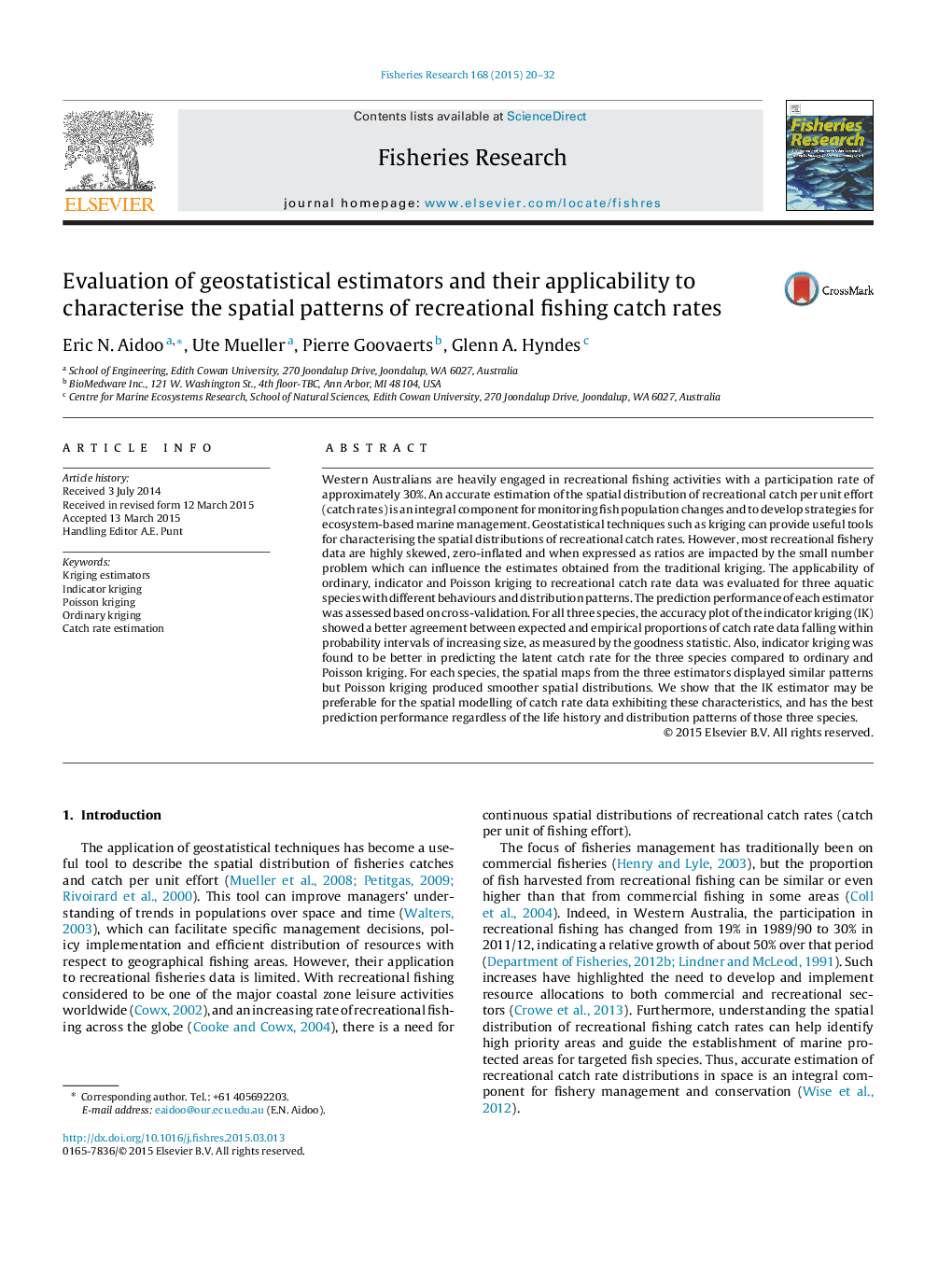| Article ID | Journal | Published Year | Pages | File Type |
|---|---|---|---|---|
| 6385743 | Fisheries Research | 2015 | 13 Pages |
Abstract
Western Australians are heavily engaged in recreational fishing activities with a participation rate of approximately 30%. An accurate estimation of the spatial distribution of recreational catch per unit effort (catch rates) is an integral component for monitoring fish population changes and to develop strategies for ecosystem-based marine management. Geostatistical techniques such as kriging can provide useful tools for characterising the spatial distributions of recreational catch rates. However, most recreational fishery data are highly skewed, zero-inflated and when expressed as ratios are impacted by the small number problem which can influence the estimates obtained from the traditional kriging. The applicability of ordinary, indicator and Poisson kriging to recreational catch rate data was evaluated for three aquatic species with different behaviours and distribution patterns. The prediction performance of each estimator was assessed based on cross-validation. For all three species, the accuracy plot of the indicator kriging (IK) showed a better agreement between expected and empirical proportions of catch rate data falling within probability intervals of increasing size, as measured by the goodness statistic. Also, indicator kriging was found to be better in predicting the latent catch rate for the three species compared to ordinary and Poisson kriging. For each species, the spatial maps from the three estimators displayed similar patterns but Poisson kriging produced smoother spatial distributions. We show that the IK estimator may be preferable for the spatial modelling of catch rate data exhibiting these characteristics, and has the best prediction performance regardless of the life history and distribution patterns of those three species.
Keywords
Related Topics
Life Sciences
Agricultural and Biological Sciences
Aquatic Science
Authors
Eric N. Aidoo, Ute Mueller, Pierre Goovaerts, Glenn A. Hyndes,
